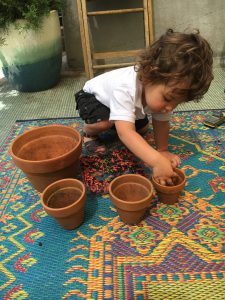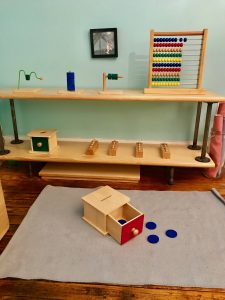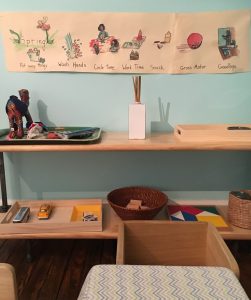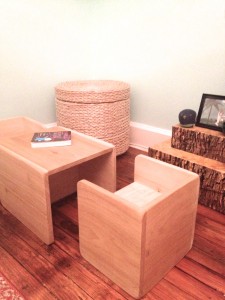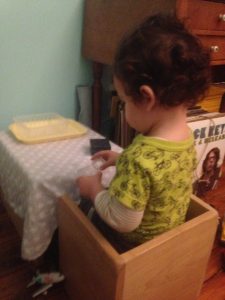First steps:
Ages 15-24 months
When friends or parents discover that I am a Montessori mom the first question is inevitably what activities they can do with their child to begin building in the Montessori-at-home approach. When is a good age to start? What Montessori materials are a must? Do they have space in their Brooklyn apartment?
This two-week series will explore this question and will seek to answer it in a way that is simple, straightforward and ultimately doable in the joyful chaos that is parenting.
We will take it one day at a time…starting today!
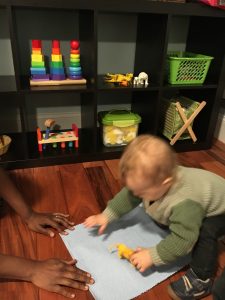 Day 1
Day 1
The Prepared Environment
As director of Neuleaph Early Learning over the course of three years, I had the task of consulting with the parents who volunteered to host our playgroups to incorporate a mini Montessori environment into their home. These homes, each lovely in its own way, came in various shapes, sizes and styles. The goal was always to use as much of what parents already had in their home as possible and to stay within their unique aesthetic.
Of course Montessori is a way and a language, yet some basic preparations of the environment are necessary. The prepared environment represents the structure within which a child is given freedom to work. This balance of freedom within structure is at the heart of the approach.
The very first step is to consider each room in your house and what important work and play happens there. Then create child-sized space where your own child can participate in practicing the skills of this work in a simple and meaningful way.
It makes sense to begin of course with – what else? – the living room. Rather than allowing your child’s toys to drift out all over the home, a small shelf in the living room serves as a place for a rotating set of works chosen for your child’s interests and burgeoning developmental skills.
The shelf need only have two levels, enough to fit about six to eight works. It should have an open space large enough for a child to sit comfortably before it and should be accompanied by a container holding large and small work mats. Small framed pieces of art or a daily schedule hung at a child’s eye level can complete the sense that this corner is just for the child.
A child-sized table nearby is ideal. You might choose to use a low coffee table for standing work – added incentive to keep the table clean and clutter free when not being used for a specific purpose.
I personally love the classic Montessori wooden cubes which can be a chair or table for children learning to sit with sides that support. These can be purchased on various sites though I recommend a search in Etsy for the best quality.
Tomorrow we will explore what to put on this shelf!

